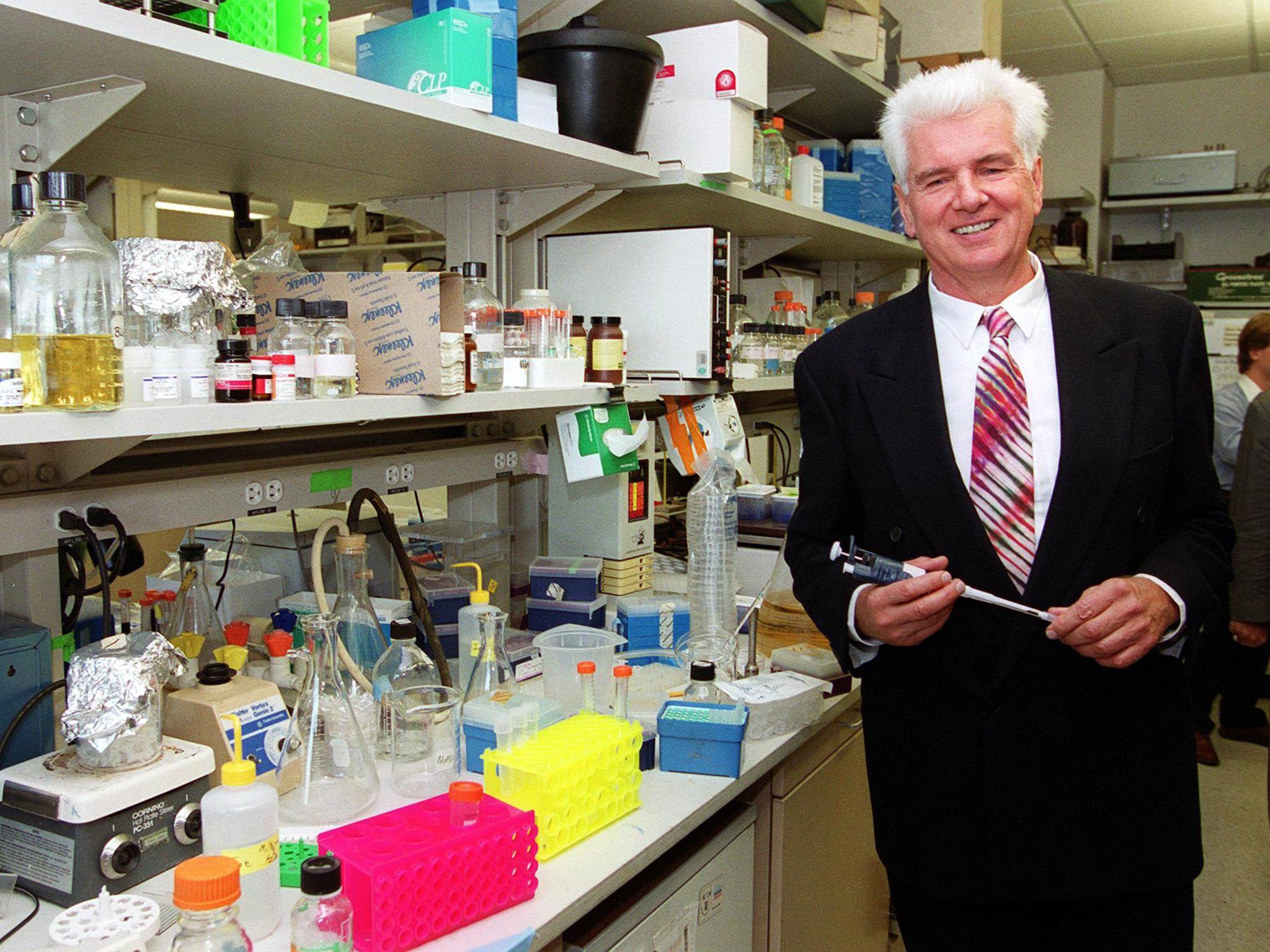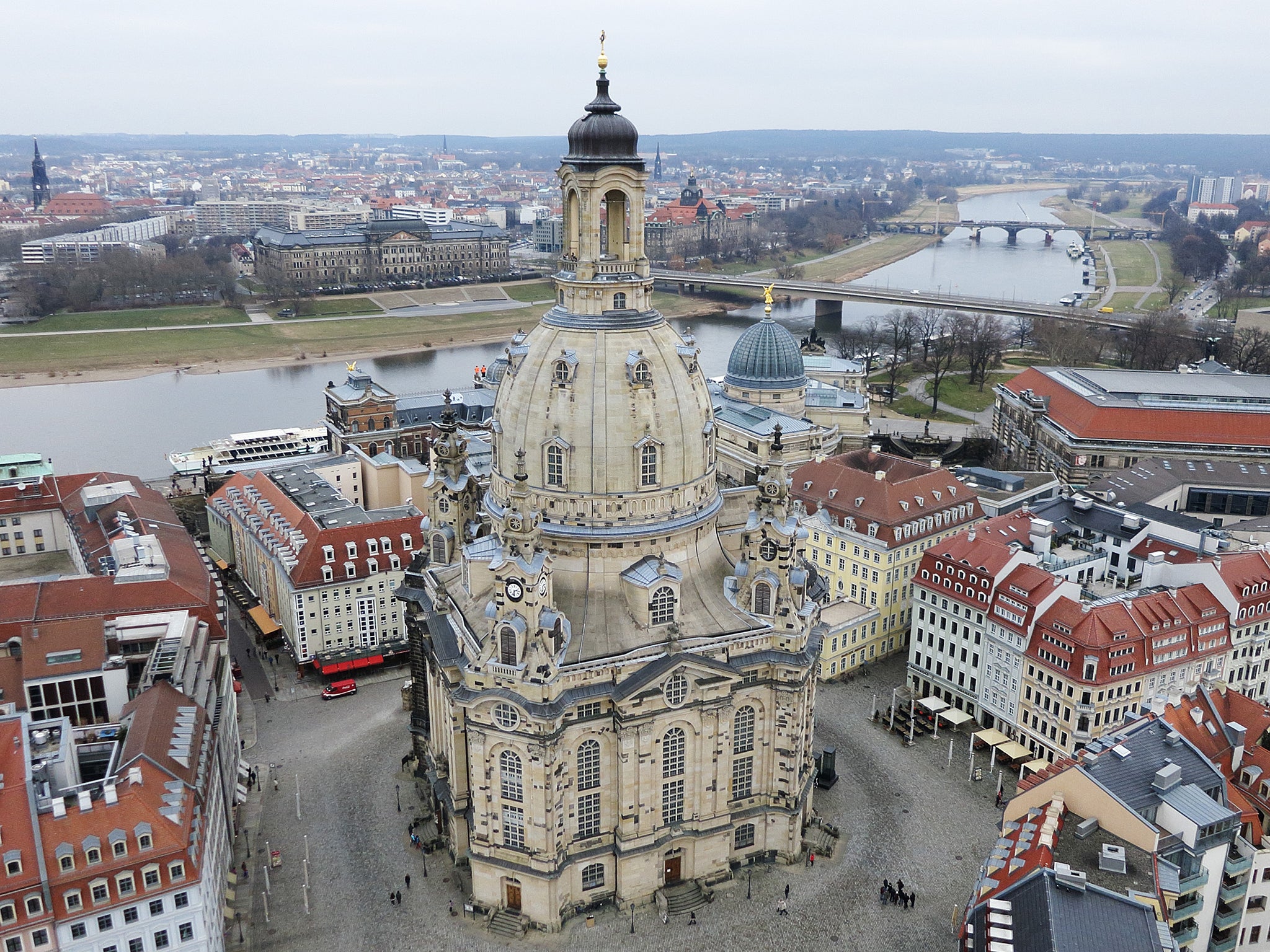Günter Blobel: German biologist who donated Nobel prize cash to rebuilding Dresden synagogue
His pioneering work in identifying signposting mechanisms within protein structures was parallelled by his passion for architecture

Your support helps us to tell the story
From reproductive rights to climate change to Big Tech, The Independent is on the ground when the story is developing. Whether it's investigating the financials of Elon Musk's pro-Trump PAC or producing our latest documentary, 'The A Word', which shines a light on the American women fighting for reproductive rights, we know how important it is to parse out the facts from the messaging.
At such a critical moment in US history, we need reporters on the ground. Your donation allows us to keep sending journalists to speak to both sides of the story.
The Independent is trusted by Americans across the entire political spectrum. And unlike many other quality news outlets, we choose not to lock Americans out of our reporting and analysis with paywalls. We believe quality journalism should be available to everyone, paid for by those who can afford it.
Your support makes all the difference.Dr Günter Blobel was the a Nobel Prize-winning biologist who drew parallels between the beauty of cellular structures and baroque architecture.
Blobel, a fellow at New York’s Rockefeller University since 1967, used the money he won for his protein research to mend war-ravaged buildings in his native Germany.
Blobel, who has died aged 81, spent decades studying the movement of proteins, biologically indispensable molecules that transmit signals, defend against viruses or bacteria, transport atoms or molecules, and catalyse chemical reactions. Each human cell contains about a billion proteins, most of which live for several days before they must be replaced by still more proteins of several thousand varieties.
While healthy cells are abuzz with their production and movement, newly formed proteins always seem to know their destination, Blobel and his colleagues observed in the early 1970s. The string-shaped molecules were apparently imbued with a secret code, or were following a hidden blueprint that ensured they reached the correct location within or outside the cell.
“I kept asking myself,” Blobel said in 2004, “If I were to design a system, how would I do it?”
He envisioned a process whose elegance and simplicity would have delighted the architects he had idolised since he was a boy, passing through the streets of Dresden, Germany, days before the city was levelled by British and American bombers in the Second World War.
Proteins, he speculated, are encoded with the molecular equivalent of a postcode or luggage tag, a sequence of amino acids that help a particular protein reach its destination within the cell.
It was the kind of hypothesis that alternately delighted and infuriated his colleagues, some of whom felt that Blobel, a man who threw himself into imaginative speculations throughout his career, strayed too far from established fact. It was also entirely correct.
“He would deny it, but it was almost as if he had one of these streaks of clairvoyance,” says Sanford Simon, a Rockefeller University biophysicist and former student of Blobel. “What he really cared about was the chase of going down and experimentally testing something. He wanted to understand the architecture of the cell.”
Blobel laid out the beginnings of his idea with colleague David Sabatini in 1971, and four years later he published an article with Bernhard Dobberstein that outlined the theory in detail.
In place of a postcode, the researchers described a protein’s “signal sequence,” which attracts a postman-like “signal recognition particle” that delivers the protein to its destination, typically a membrane-enclosed cellular feature called an organelle. That delivery particle then helps the protein enter the organelle’s membrane, functioning like a key in a lock.

“Günter’s work in many ways initiated the whole modern era of what we call molecular cell biology,” Richard Klausner, former head of the America’s National Cancer Institute, said after Blobel was awarded the Nobel Prize in medicine in 1999. “It began to merge the observational approaches of cell biology, looking, describing structure,” so that scientists could “figure out how molecular information underlies the structure and functioning of the cell.”
Blobel’s research also resulted in major medical advances, including scientists’ ability to produce mass quantities of proteins such as insulin, and the realisation that several genetic disorders – including cystic fibrosis and diseases that cause high cholesterol and kidney stones – are triggered by signal-sequence errors.
Such far-reaching consequences were part of the reason Blobel, who had initially planned to work as a physician, became a medical researcher. It was only by studying the fundamental workings of the cell, he reasoned, that diseases could be understood and possibly defeated.
Günter Blobel was born in Waltersdorf, a Silesian town in the 1930s located in Germany that is now in Poland. His father was a veterinarian, and his mother was a homemaker from a well-to-do farming family.
Blobel said his childhood “was a perfect 19th-century idyll,” filled with slow meals and sleigh rides to his grandparents’ farm, until the family fled the Soviet Red Army in 1945. He later said that he was staying at a relative’s farm near Dresden when he watched a flying armada stream toward the city. “For an eight-year-old, this was all very impressive,” he said. “The bombing was so bright that you could read the newspaper by the red sky.”
Though a young Günter spent only a short time in Dresden, the sight of buildings such as the Frauenkirche, a high-domed 18th-century church that was destroyed in the bombing, instilled in him a love of architecture that lasted until his death. He later gave lectures alongside architects, Simon said, describing the similarities shared by man-made structures and microscopic cells.
Blobel graduated from the University of Tübingen’s medical school in 1960 and, at the suggestion of his oldest brother, a veterinarian on the faculty of the University of Wisconsin, completed his education in the United States. He received a doctorate in oncology from Wisconsin in 1967 and subsequently joined Rockefeller University on a research fellowship. Beginning in 1986, he also worked as an investigator at the Howard Hughes Medical Institute, a medical research organization based in Chevy Chase, Md.
In 1976, he married Laura Maioglio, owner of the New York restaurant Barbetta, an elegant theater-district destination founded by her father at the turn of the century. “Our schedules meshed,” he once told the Times, “because she worked late at the restaurant and that gave me the opportunity to come home late from the lab.”
In addition to his wife, Blobel is survived by three brothers and two sisters. His oldest sister, Ruth Blobel, was killed in an airstrike at the close of the Second World War.
It was in her honour that Blobel donated all of his $1m Nobel winnings to Friends of Dresden, a group founded in 1995 to help renovate and rebuild some of the structures Dresden lost during the war. The funds were used to construct a synagogue destroyed during the Kristallnacht attack on German Jews, and to rebuild the Frauenkirche.
“It was like a call,” Blobel said 2001. “And I had to answer the call.”
Günter Blobel, Nobel prize-winning biologist, born 21 May 1936, died February 2018
© Washington Post
Join our commenting forum
Join thought-provoking conversations, follow other Independent readers and see their replies
Comments